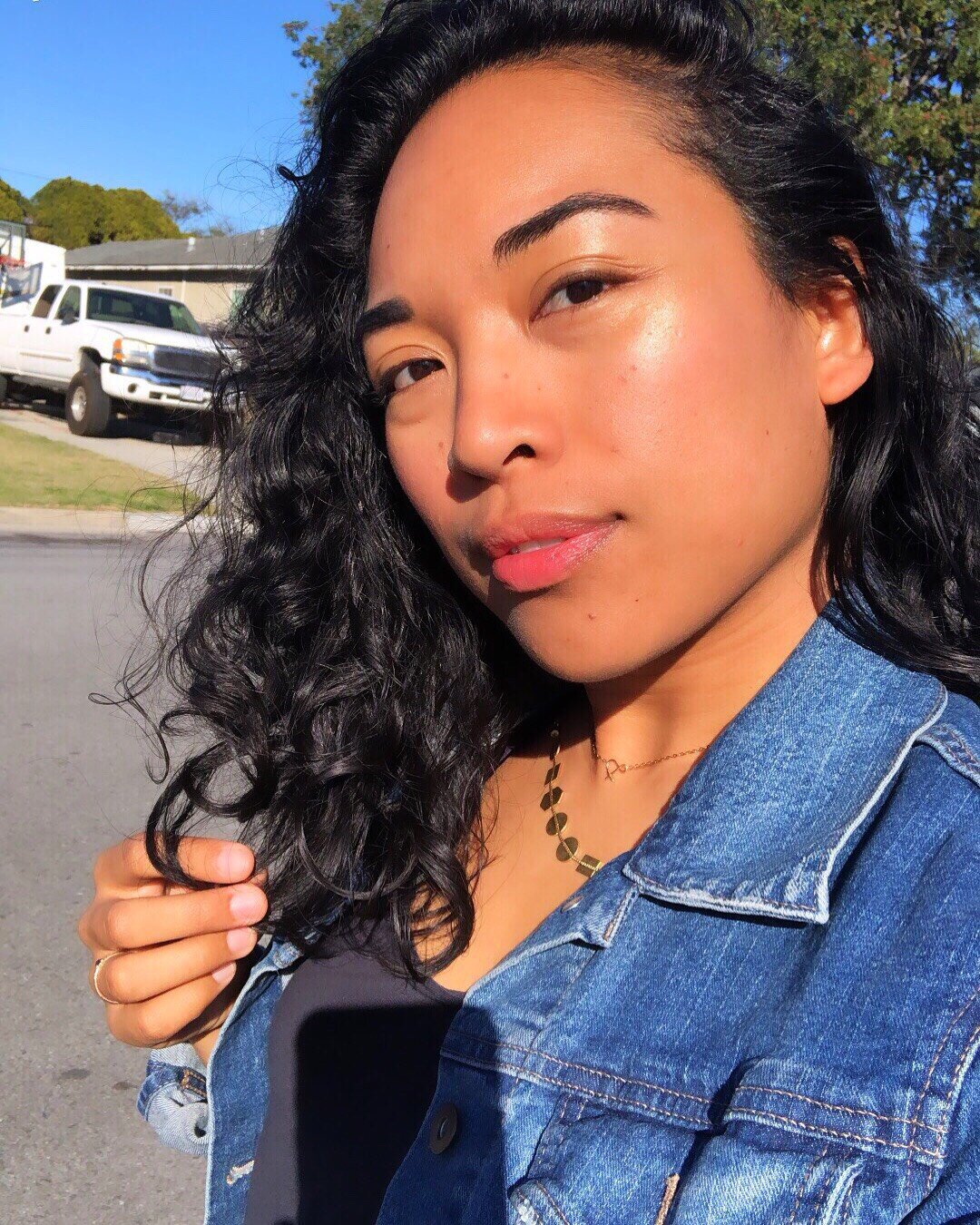What are your intersections?
I am a 2nd generation Pinay-American, straight, cis-gendered woman. I was born and raised on Tongva land – Northeast LA.
What is your background?
Growing up Pinay meant growing up with a keen sense of duty to family. I had the privilege of a loving and supportive childhood home, but I was also very aware of how hard my parents - specifically my mom - worked to provide. She held down three nursing jobs to pay the steep tuition for the private Christian school my little brother and I attended. As a middle school student, I taught piano lessons as a way to earn money so I wouldn't be a burden. Then when my parents divorced, I became the parent for my younger brother. To this day I am jealous of my friends who were able to just be older siblings and never substitute parents.
My parents moved to the States in their late teens, so they were very Americanized by the time they had me in their mid-20s. They did not teach me to speak Tagalog or Ilocano because they were so used to speaking in English. We only visited the Philippines once because my parents couldn't afford tickets for our family of four and because my mom was afraid of flying. Instead, my culture was passed down through food; through sitting around a noisy table full of relatives, one knee up, digging in "kamayan" style - no forks or knives - just hands.
Around these tables, I learned that, "did you eat?" is synonymous with, "how are you?"
I learned that I should study hard for a career in medicine.
I learned that I should "stay out of the sun."
How do your intersections affect you?
I am on a journey of discovering how I – a brown, Pinay, Asian-American, Christian, woman – can unpack years of internalized oppression on top of my own intergenerational trauma. My partner is Mexican-American and I know that the personal work I do will have a direct effect on our future bi-racial children. I don’t want colorism or the model-minority myth to be a part of their mentality. I don’t want racist stereotypes of Asians or Mexicans to harm their self-worth. I want them to feel like one whole and not two halves. Loved fully.
I teach elementary music at a private Christian school very similar to the one I grew up in. I remember how hard my family struggled to keep me at the private school. I know I have students facing similar situations. I am in a distinct position to advocate for my students of color. As an educator of color, I want to break the narrative that the realm of education is for white academics. I use the medium of music to introduce my students to social/racial justice and to build bridges of connection. As a follower of Jesus, I teach my students that being a Christian means having an open heart for everyone, and that love is a word of action.
And for the record, I never “stay out of the sun.”
More on “How I can unpack years of internalized oppression on top of my intergenerational trauma”
The Philippines is a country with a painful history of over 500 years of colonization and imperialism from Spain and the United States. Because of this, whiteness (as a culture and literally) is often seen as a goal.
Colorism is a huge issue throughout Asia, and the Philippines is a great example of how it manifests through a lack of representation of darker skin tones in media, the market for whitening soaps and creams, and in how individuals with darker skin-tones are treated. I am a darker skin-toned Pinay, and I do not have the coveted straight, slick hair that many Asians do. When I was a kid, my family would jokingly call me "dark one" "extra toasted" and "burnt." A boy I dated in high school told me that I looked better with straightened hair than my natural curls, but then a boy I dated in college exoticized my islander looks. Both made me feel objectified. It wasn't until my 20's that I learned to truly embrace my features and the beautiful heritage behind them. Now that I've learned more about my own history as a Pinay-American, and the history of the country I call home, I know that colorism is anti-blackness and therefore racist. Embracing and loving my brown skin (while also spending the privilege I carry as a non-Black POC) is a form of resistance.
In addition to racist colorism, the model-minority myth is another tool of white supremacy that I am trying hard to dismantle. One of the biggest issues I have with this myth is the false expectation that Asians do not rock the boat. Because of colonization, Pilipinx are master assimilators so I grew up not knowing the power of my own voice or the power of my own people. But after learning of people like Gabriela Silang - the first Filipina woman revolutionary leader who fought for independence from Spain or Larry Itliong - a farm worker who, with other Filipino farmers, began the Delano Grape Strike and pushed for workers rights in California, I know the myth of the quiet, compliant Asian is the farthest from the truth. As Faith Santilla writes, "Filipinas are no strangers to wielding our own power."
..........
#TWintersectionalfridays: Space to explore intersections of identity and systems of oppression. Space to tell your story. Space to listen. Every Friday of 2019. // Week 08/52. 'Czarina' / 8x8 in. / mixed media on paper


